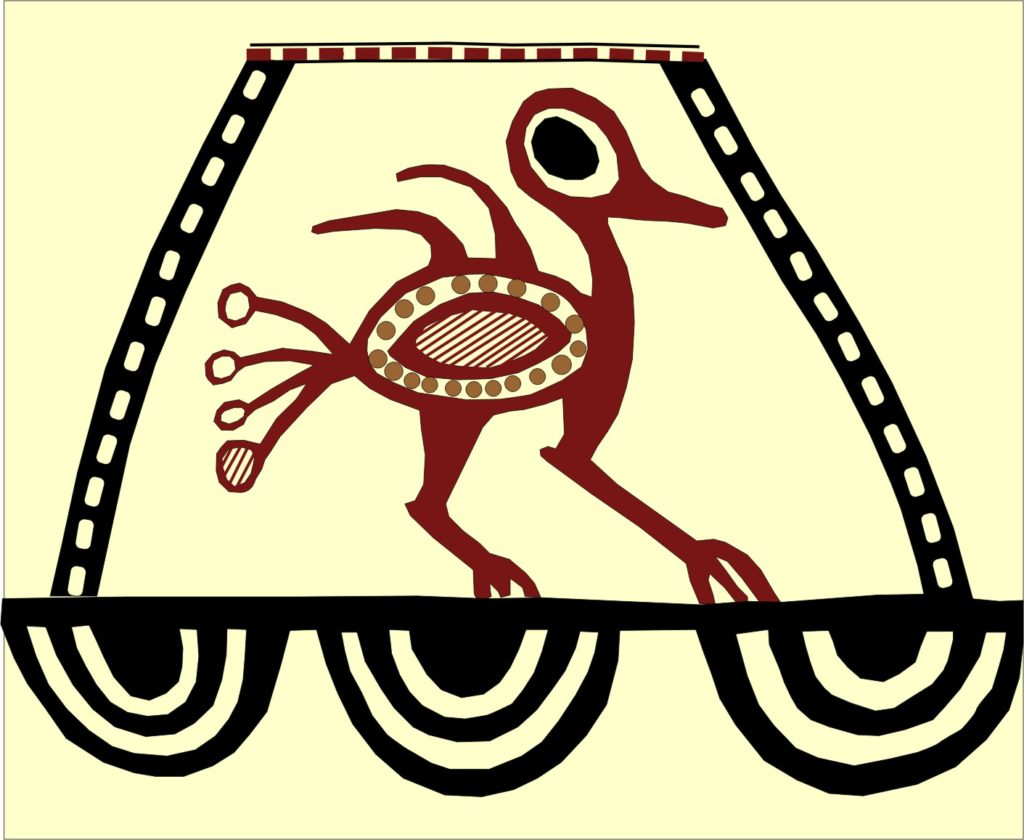Midian was the location of Moses’ 40-year exile from Egypt, circa 1486-1446 BC (based on biblical chronology). During that time, he married the daughter of the priest of Midian (Jethro), and tended his flocks. He also visited the Mountain of God, later called Mount Sinai. (cf. Exod. 2:15-3:1; 4:18-20; 18:1-5).
Various classical and historical sources place Midian east of the Gulf of Aqaba, in what is now the northwest part of the Kingdom of Saudi Arabia (see map below). These sources include: 1st century AD—the Jewish historian Josephus; 2nd century AD–the Greek geographer Ptolemy; 3rd century AD—church historian Origin; 4th century AD—theologian Saint Jerome; and Medieval Arab historians/geographers.
The greater Midian region is mapped below. Like the modern populations, ancient populations preferred areas with predictable water and fodder resources such as the coastal sites associated with wadi (stream) outflows. Historically, these locales were at Maqna, Aynunah, Ash-Sharmah, and inland at Al-Bad’. Detailed arguments concerning the location and definition of Midian are given in my books, The Lost Sea of the Exodus, Second Edition (pages 205-207), and Fire on the Mountain (pages 1-3; 9-10; 13).
The Arab News recently published an article about Saudi archaeology projects that adds confusion to the topic of ancient Midian (at http://www.arabnews.com/node/1301611/saudi-arabia). Here is an excerpt:
Qurayya Oasis, the capital of the Median dynasty, is one of the largest archaeological sites in northwest of Saudi Arabia at which the Saudi-Austrian mission is currently conducting extensive surveys and excavations.
The field works yielded 6.5-kilometer-long enclosure walls surrounding and protecting the city from the four sides. Also, some furnaces for producing the so-called ‘median pottery’ date back from the late Bronze Age to the early Iron Age.
Moreover, there was also a distinctive collection of pottery fragments decorated with drawings and multi-colors, beads, pieces of metal and remnants of war tools that included a complete 90-centimeter sword.
The Qurayyah location appears in the right, middle of the above map. It is situated in the eastern Hisma desert, at a point 70 km (43 mi.) northwest of the major city of Tabuk (not on this map). In Arabic, Qurayyah means “little village.”
There are two problems worth noting in the above Arab News quote: 1) the references to “Median” and “median pottery”; 2) the statement that Qurayyah was “the capital of the Median dynasty.”
First, using “Median dynasty” to refer to Midian is likely a translation error (from Arabic to English), as Media had nothing to do with Midian. It is also a stretch to conclude that the biblical Midian was a dynasty, in the true sense of the word. Media, or the Medes, the first of a series of Persian empires, flourished circa 612-549 BC, much later than the 15th century BC biblical Midian. Media was also distant from Midian, lying 900 air miles to the northeast, in what is now, northern Iran. The Medians were defeated about 550 BC by Cyrus the Great, whose Achaemenid empire later expanded to three continents.
Secondly, Qurayyah has been mistakenly associated with the domain of Midian due to the injudicious use of the term “Midianite Pottery,” coined by Peter Parr et al (1970, 240). This term referred to unique, decorated pottery made at Qurayyah that was also found at 14 sites in northwest Saudi Arabia and at the Timna copper mines (aka “Solomon’s Mines”) in the Negev. The “Midianite Pottery” term was reiterated by Ingraham et al. (1981, 74-75) and further popularized by the 1983 article by Rothenberg and Glass in Midian, Moab and Edom, The History and Archaeology of Late Bronze Age Jordan and North-West Arabia. But, Peter Parr (1988, 74) later cautioned against applying ethnic labels to pottery styles, considering the lack of known ties between Qurayyah and the Midianites. He suggested using the term “Qurayyah Painted Ware” (QPW), which investigators have generally employed since.

An illustration of an ostrich motif found on Qurayyah Pottery Ware (QPW).
Connecting Qurayyah and its pottery industry with ancient Midian poses geographical and chronological problems. Qurayyah is relatively distant and isolated from the coastal Midian domain. For instance, Qurayyah is 105 km (65 mi.) east-northeast of the inland town of Al-Bad’ (linked with ancient Midian), and there is no direct travel path between them due to the intervening mountain range (see map). Qurayyah is also in an entirely different geographical district, the Lihh lowland on the western fringe of the Tabuk basin. Here, the watershed and travel routes gravitate east to the major incense trade route, lying just 25 km (15 mi.) away, which supplied its commercial trade connection.
The second issue is chronological. Was the activity at Qurayyah associated with Midian in the time frame of the Exodus? Based on the standard Egyptian chronology, the QPW at the Timna copper mines has been dated to 1290-1152 BC (Rosenberg and Glass 1983, 100), well after the biblical 1446 BC Exodus. But, Parr (1988, 73) noted that this dating has been plausibly criticized as being too early. More recently, Bimson (and Tebes 2009) noted that 1290-1152 BC dating created a large artificial gap in the pottery sequence of northwest Arabia. They suggested an even later QPW dating based on a modified Egyptian chronology.
In conclusion, historical sources place Midian east of the Gulf of Aqaba in the coastal areas of northwest Saudi Arabia. This Midian is not connected in any way with the later Media of ancient Persia.
Considering the chronological and archaeological record of of QPW pottery in northwest Arabia, it is premature to conclude that the “Qurayyah Oasis” was the capital of Midian, much less a Midianite community, especially in the 1446 BC timeframe of Moses and the Exodus.

